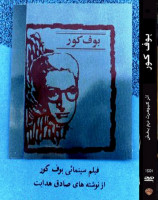Boof-e koor Filming Locations
Boof-e koor Filming Locations
Tehran is the capital of Iran, in the north of the country. Its central Golestan Palace complex, with its ornate rooms and marble throne, was the seat of power of the Qajar dynasty. The National Jewelry Museum holds many of the Qajar monarchs’ jewels, while the National Museum of Iran has artifacts dating back to Paleolithic times. The Milad Tower offers panoramic views over the city.
Paris, France's capital, is a major European city and a global center for art, fashion, gastronomy and culture. Its 19th-century cityscape is crisscrossed by wide boulevards and the River Seine. Beyond such landmarks as the Eiffel Tower and the 12th-century, Gothic Notre-Dame cathedral, the city is known for its cafe culture and designer boutiques along the Rue du Faubourg Saint-Honoré.
Boof-e koor (1975)
The uncle of the young narrator enters his house unexpectedly. In order to offer him some refreshments, he goes to bring a bottle of wine. Through the crevice of the wall which happens to be there, he sees an ethereal girl offering a lotus flower to an old man who bursts into a hair-raising laughter. Surprisingly, this is exactly the picture he keeps drawing on pen cases as a calling. He is then jolted into realities. The thought of the old man gradually begins to loom over his life and sow the seed of anxiety. The narrator embarks on a journey in search of the ethereal girl and the old man. His journey, however, takes him into a study of history and myths. The narrator comes back and realizes that his uncle has left, leaving the door agape like the mouth of a dead man. Desperately he goes out to look for the ethereal girl. But upon returning he finds the girl sitting on the front stairs. The girl enters the house as if she knows the way and lies in bed. But she is dead. In the morning the narrator cuts the body into pieces and puts them in a trunk. Then an odds-and-ends man appears out if the blue to help him with burial. While digging the ground they find an ancient pottery which the old man takes as his wages. The pottery bears the same picture he keeps painting on his pen-cases. In the second section, the narrator finds himself bedridden in a room with two small windows to the outside world. Through the small window he can see a butcher and an odds-and-ends man. He recalls his past; his mother leaves him and goes to India and entrusts him to the care of a nanny. Later the narrator marries his cousin who does not love him and instead sleeps with the rabbles. He gradually wastes away and approaches death even more. The only communication in his small world is his nanny who evokes his feeling of hatred for old beliefs and superstitions. Feeling the sharp fangs of death on his neck, he decides to the take his wife with him. So he disguises himself as the odds-and-ends man and kills her. And he becomes the odds-and-ends man himself. In fact, the narrator becomes one of the rabbles whom he holds in great abhorrence.
